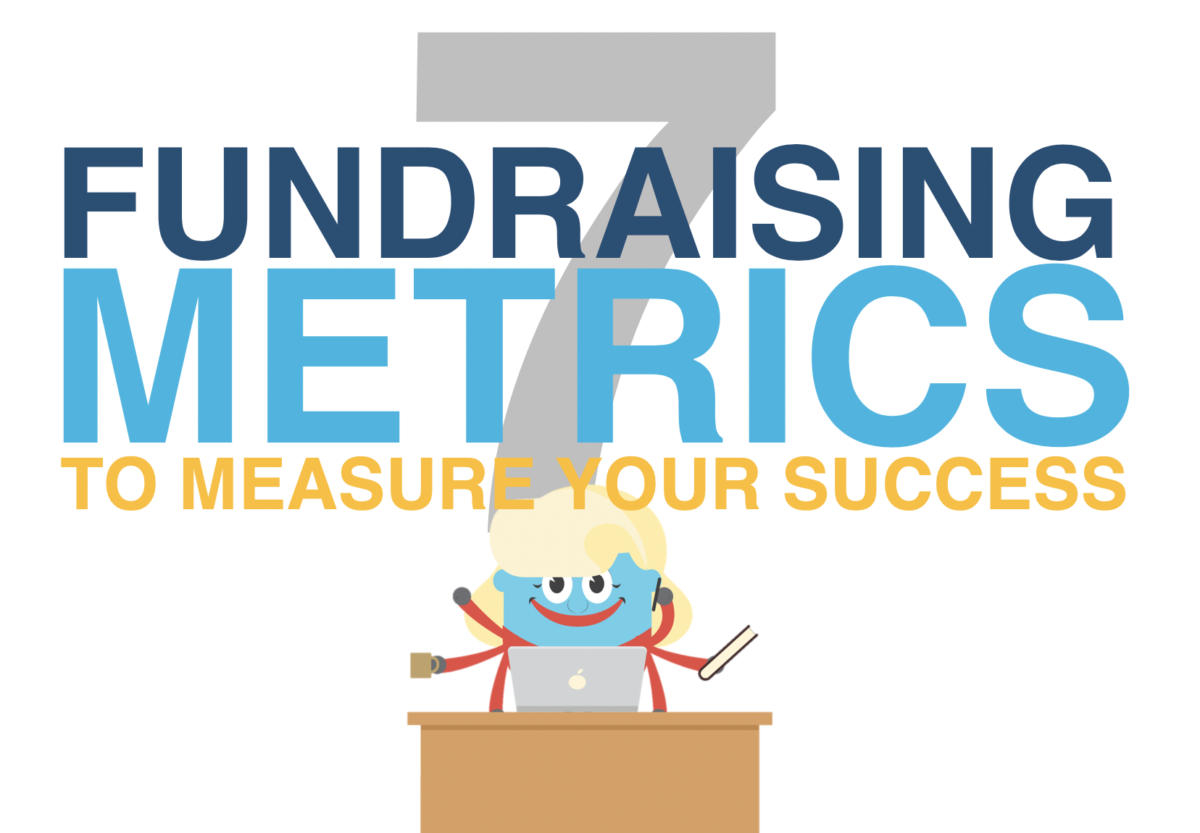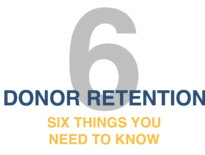In any organization, be it for-profit or non-profit (as well as everything in between), metrics are essential. They help organizations to measure their successes and failures. They aid them in analyzing what brought them to either result. Careful analysis of metrics can show trends in behavior to help organizations understand who to target and how to target them.
For charity organizations, metrics are no less important. In fact, because of the reliance held by charities and non-profits on publicity and widespread support, the process of analyzing metrics is wholly essential to running a successful charity organization.
Because the talk around charity metrics can often become confusing and diluted (special thanks to the saturation of internet info), we’ve decided to compile a list of charity metrics worth going over. Stick to understanding these metrics, and you’ll find yourself on the path to truly understanding your charity along with its impact.
1. Donation Growth
What is It?
Donation growth, as we’ve covered extensively in the past, is the increase in the size of your received donations over a given period of time. It measures how the quantity of donations has increased.
For instance, if you’re looking to understand what your charity’s donation growth has been from 2019 to 2020, you’re essentially counting the monetary rate of change that occurred during that time frame (if you made $4 in 2019 and $5 in 2020, your donation growth rate is 1/5th or 20%).
Why is It Important?
Understanding donation growth is key to measuring your success as a nonprofit. If the donation growth rate is skyrocketing, that means that you may be doing something right. If the donation growth rate is displaying stagnant numbers (or worse, declining instead of growing), you may be doing something wrong.
It’s the first metric that most people look to when they’re trying to analyze the success or failure of their business. After all, the success of a nonprofit is almost exclusively measured in how well their donation growth has been since they began. Ideally, charities and nonprofits want to aim for the highest donation growth rates possible.
2. Donor Acquisition
What is It?
Donor acquisition, on its own, simply refers to the number of donors your charity or nonprofit is acquiring. It’s calculated by determining the number of donors who gave to your charity any given year who had not done so ever before. While a high donor acquisition rate is not, on its own, a telltale sign of success, it can be a stepping stone to developing strategies and solutions for organizational growth.
It’s tied very closely to almost every single factor on this list, and because of that, it warrants further explanation.
Why is It Important?
When talking about donor acquisition cost (also known as DAC, e.g., how much each individual donor cost you in order to be acquired into your nonprofit), donor acquisition is square one. However, this metric isn’t just good for determining DAC – through understanding and establishing donor acquisition, you’re well on your way to determining donor growth rate, donor retention rate, and donor churn.
3. Lapsed Donors
What is It?
The term “lapsed donors” refers to the number of donors who left your organization. They were previously donors, and now they are no longer donating. Every single charity and nonprofit will have some percentage of lapsed donors – perfection is impossible to achieve for any organization.
Why is It Important?
Determining the number of lapsed donors to your organization is mostly useful for understanding donor retention and donor acquisition cost. Although a seemingly grim metric, this number can be extremely useful toward strategic development.
Lapsed donors are, perhaps, most helpful in allowing you to analyze what you did wrong (and where). Understanding this metric is the first step toward regaining lapsed donors and retaining the ones you already have. It also helps you open the door to remedying lapsed donations – a nail in the proverbial coffin for the donation growth of charities.
To keep it short and sweet: the lower your rate of lapsed donors is, the better your donor retention will be. The better your donor retention is, the more time you have to focus on a high donation growth rate.
4. Donor Retention
What is It?
Donor retention refers to the number of donors who have stuck by your charity or nonprofit since they began donating. It measures how many donors keep coming back to give to you.
More formally, donor retention rate measures the number of donors from the last business period who gave again this business period (by business period, we’re referring to quarter, year, and the like).
Why is It Important?
Maintaining high donor retention is something that is sought after by most organizations. It can help you to understand how effective and productive the strategies to maintain donors are for your organization and can lead you on the path to analyzing donor behavior.
Donor retention is an objective way to understand what you did right. Not only this – it can help you gather statistics and behavioral data on your donors.
Is your organization effective at reaching its donors? Maybe you have a foolproof marketing strategy for donor acquisition but wind up with unhappy or dissatisfied donors once they become financially affiliated with your organization.
Are your donors upgrading? Is your donor retention rate low but your donation growth high? In conjunction with other factors, donor retention can be incredibly useful for your data analytics teams.
5. Donor Churn
What is It?
Donor churn refers to how quickly donors are either growing or leaving each year. Essentially, it’s the rate of either growth or loss of donors. It’s the donor acquisition subtracted from lapsed donors.
For instance, let’s say your organization had 20 donors in 2019. Then, in 2020, 5 of those donors left, and 6 new donors came along. This means that in 2020, you had an acquisition of 6 donors, and a lapse of 5 donors. Because, in 2020, you had more donors than the previous year, your donor churn is 1 donor per year for 2020.
Let’s reverse this example, keeping the same number of donors in 2019 (20). In 2020, 6 donors left, and 5 new ones came along. Your acquisition is 5 donors, and you have 6 lapsed donors. This means you had fewer donors in 2020 than in 2019. Your donor churn is -1 donor per year for 2020.
Why is It Important?
Donor churn is a fair indicator in determining or predicting donor growth. It forces you to look at both acquisition and lapse, and understand how those numbers compare to your donor retention rate.
Rather than measure how many or how little donors you’re churning out, look at donor churn as a measurement of speed. No charity will ever have a retention rate of 100% – therefore, it’s important to analyze donor churn so that you’re making sure acquisition of donors is always coming in at a higher number than lapsed donors.
Additionally, it helps charities understand how certain campaigns or strategies compare with others.
6. Donation Reactivation
What is It?
Donor reactivation is an extremely gratifying number for charity and nonprofit organizations. It measures how many lapsed (or lost) donors you have gotten back this year.
In short, it refers to previously lapsed donors who were acquired this business period (quarter, year, etc.).
Why is It Important?
Donor reactivation not only means that you’ve done something right, it means that what you’ve done is enough to get back previously lost donors. It’s an incredibly effective tool in determining the success of strategies, and creating behavioral data for your donor population.
When you focus in on donation reactivation, your new organizational directions or marketing strategies have quantifiable data as to how positively or negatively impactful they were. You’ll have the ability to analyze why donors left your organization, and what qualities you projected which brought them back.
7. Donation Retention
What is It?
Donation retention is slightly akin to donor retention – it measures the amount of donors you organization has managed to keep.
Formally, it measures how many donors who gave to your organization last business period (quarter, year, etc.) that gave to your organization this business period. One of your main goals, as a charity or nonprofit organization, is to maximize the rate of donor retention.
To expand on the last part of the previous paragraph, donor retention rate refers to the rate of donors that your organization has retained. It’s calculated by dividing retained donors by all donors. For instance, if your organization had 2 donors in 2019, and kept 1 one of those donors in 2020, you had a 50% donor retention rate.
Why is It Important?
Donor retention (and donor retention rate) is a key indicator of your chances to either gain or lose income. The donors that you keep with your organization can be some of the most loyal, and hence will take a small burden off of your shoulders when put in the context of growing donor acquisition.
Donation retention rate, if it is maintained at a high number, will ensure that you can continue to collect donations, and foreshadow the success or failure of your charity or nonprofit.





Absolutely! Fundraising is integral to your overall success. Being able to measure and track the performance of your campaigns and overall strategy will help you grow and allow you to fulfill your mission.